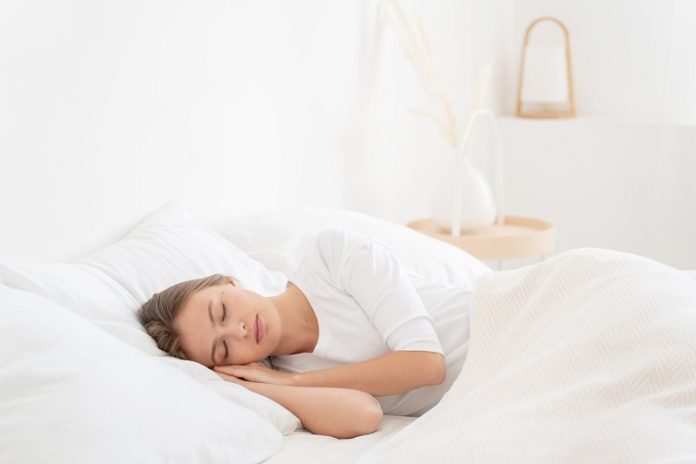
In a pioneering study, researchers from the University of Córdoba and elsewhere have made a breakthrough in diagnosing the severity of obstructive sleep apnea, a condition marked by frequent interruptions in breathing during sleep.
Their innovative approach, detailed in the Journal of Sleep Research, involves analyzing sweat metabolites, offering a non-invasive and accessible alternative to traditional blood and urine tests.
Obstructive sleep apnea is not just about troubled sleep; it’s a severe health concern linked to cardiovascular disorders.
Its symptoms include breathlessness, fatigue, and drowsiness, significantly impacting daily life. Accurate diagnosis of its severity is crucial for effective treatment and management.
The research team, comprising Laura Castillo, Mónica Calderón, Feliciano Priego, and Bernabé Jurado, explored the potential of sweat samples to gauge the severity of sleep apnea.
This groundbreaking method centers on analyzing the sweat metabolome, particularly at night, to determine the disease’s stage.
Laura Castillo, the study’s lead author, highlights the advantages of using sweat over other biological samples. It is a clean and non-invasive option, simplifying the process of metabolite analysis and detection.
This method could revolutionize how sleep apnea is diagnosed and managed, making it easier and more comfortable for patients.
The study involved analyzing pre- and post-sleep sweat samples from individuals at various stages of sleep apnea and a control group without the condition.
The team employed gas chromatography coupled with high-resolution mass spectrometry to identify 78 metabolites in these samples, mainly related to energy production and oxidative stress.
The findings revealed that sweat metabolism changes during sleep, indicating energy production deterioration and increased oxidative stress in individuals with sleep apnea.
This approach not only allows for monitoring the progression of the disease but also helps in tracking its potential effects, such as cardiovascular issues.
Notably, the trial successfully distinguished between patients with sleep apnea and those in the control group based on their sweat metabolomic profile.
Beyond establishing sweat as a valuable tool for assessing sleep apnea severity, the study also underscores the importance of considering the oxygen desaturation index in diagnoses.
Currently, the Apnea-Hypopnea Index (AHI) is used, which counts the number of breathing interruptions per hour. However, the team points out that AHI doesn’t account for the severity of these episodes.
In contrast, the oxygen desaturation index, which measures the number of events where oxygen saturation drops by more than 3%, provides a more comprehensive view by also considering the severity of the episodes.
The study confirmed a linear relationship between this index and AHI, validating its use as a more informative metric.
In summary, this research from the University of Córdoba presents a significant advancement in sleep apnea diagnosis. By analyzing sweat metabolites, it offers a less invasive, patient-friendly method for assessing the disease’s severity.
This method, combined with the use of the oxygen desaturation index, paves the way for more accurate and comprehensive diagnoses, ultimately leading to better patient care and management of obstructive sleep apnea.
If you care about sleep, please read studies about herb that could help you sleep well at night, and these drugs could lower severity of sleep apnea by one third.
For more information about sleep, please see recent studies that coffee boosts your physical activity, cuts sleep, affects heartbeat, and results showing how to deal with “COVID-somnia” and sleep well at night.
The research findings can be found in the Journal of Sleep Research.
Copyright © 2023 Knowridge Science Report. All rights reserved.


